Pelion - Magnesia (Greece)
PELION (Pelion). On the east side of Greece is located Pelion, which owes its name to the high mountain in the area: the Pilio. This mountain rises impressively and green to the northeast of Volos between the Gulf of Pagastikos and the Aegean Sea.
During winter months there is often snow on the mountain and there is a ski centre: Agriolefkes known as Hania Pelion. Activities such as horseback riding, mountain biking, mountain climbing, scuba diving, sailing and fishing, convince even the most demanding visitor. The most special of Pelion is perhaps the unique architecture of the houses in twenty villages. The houses are folk-art and are actually architectural museums. (see Portaria, Makrinitsa, Milies)
The typical tower houses are gradually built and consists of three floors. Some of these houses are now a museum, so you can take a look inside. The beautiful nature and unique locations throughout the year attract tourists. There are densely wooded mountains, peaceful valleys and fertile plains.
Photo Gallery Pelion - Photos of Pelion
Pelion has a rich history and it is the birthplace of several myths and legends. The area is known since the Neolithic period. With significant settlements it was very prosperous in the 2nd century BC. In the Hellenistic years, the third century BC, the main city "Dimitriada" was founded. In the Byzantine years, the monastery was a flourishing centre. In 1881, Pelion was incorporated into the new Greek state.
The beautiful nature and unique locations throughout the year attract tourists. There are densely wooded mountains, peaceful valleys and fertile plains. Agios Ioannis Kissou and Agios Dimitrios are the largest resorts in Pelion, with extensive beaches of white pebbles and dense vegetation. Ag.Ioannis is seafront and Ag. Dimitrios is built against the mountain. It has two squares that offer beautiful views. The Sotiras Church, the oldest church in Pelion is well worth a visit.
Also Chorto, a small picturesque village on the Pagasitic Gulf is a wonderful destination. The beautiful houses, the green mountains and valleys, the paved roads, the squares, the stone springs and the arched bridges form a unique image. A close walking path of narrow roads and stone paths gives visitors the opportunity to discover magnificent, rare spots. The ride with the traditional train "Lason" is on the route Ano Lechonia - Milies with intermediate stops in the villages and is a great experience. Of course the beaches are also well represented. On the eastern side you will find rocky beaches covered with sand and shaded by trees.
Weather forecast Pelion (Magnesia)
Pelion in other languages
Magnesia: Where on the map is Pelion located?
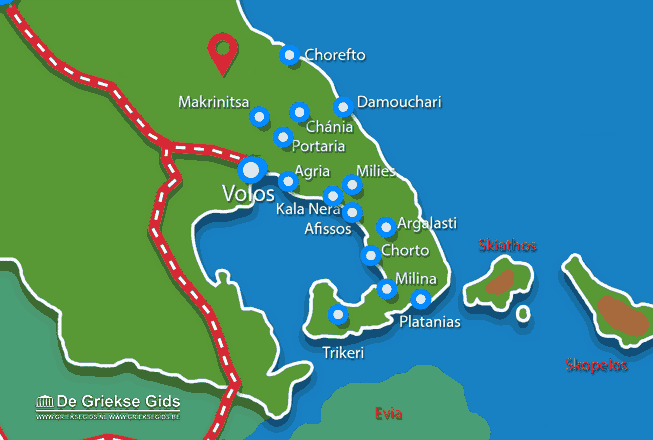

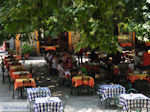
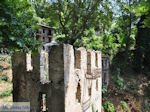
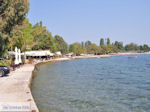
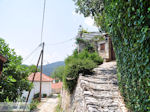
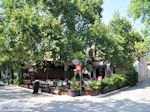
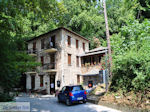
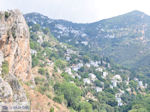
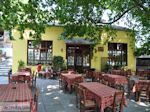
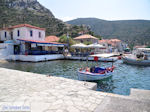
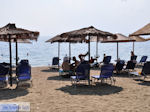


 Pilion (GriekseGids.nl)
Pilion (GriekseGids.nl) Pilion (GriekseGids.be)
Pilion (GriekseGids.be) Pelion (JustGreece.com)
Pelion (JustGreece.com)